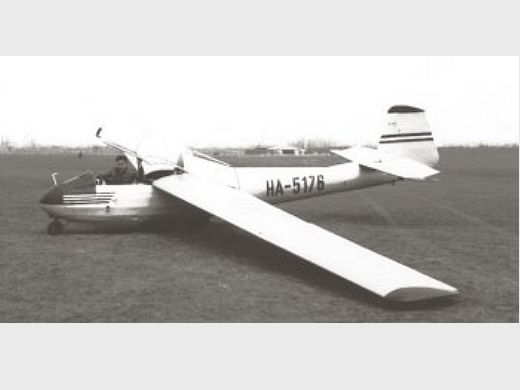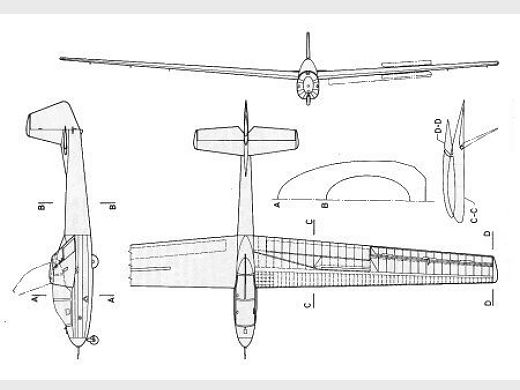| Histoire résumée | In 1950 the Hungarian Aeronautical Association (MRSz) invited tenders for a two-seater training glider. The specification mirrored the general concept that gliding is simply the first step to train military pilots. The intention of the MRSz was to build 100 gliders of the winner design. The Z-03 Ifjúság designed by Ferenc Zsebõ, won the contest.
The designer was completely attached to the general concept and the glider was stressed for basic aerobatic training. The prototype was built by the Central Workshop of the MRSz at Dunakeszi. The glider first flew at February, 1953. Her handling characteristics were considered favorable. The control forces were similar to that of the Cinke (the Hungarian version of the Meise-Olimpia) and climbed in thermals well. However glider pilots did not liked the uncomfortable seats and the seat-type parachutes instead of back-packed ones. Performance data were measured at the Aircraft Department of the Technical University of Budapest. As better values had been gained than expected, the role of the type was extended for training performance gliding and aerobatics as well.
The Z-03 Ifjúság was a middle-wing, tandem two-seater glider with mixed metal-wooden structure. It was certified for cloud flying, basic acrobatics and spins.
The first glider of the serial production first flew at January, 1955. Altogether 32 gliders were built up to April, 1955. The prototype had been exhibited at the Leipzig Fair in 1955 and three glider were exported to Belgium at the same year.
The glider's performance was verified by a couple of remarkable flights. 65 km/h speed was achieved over a 100 km triangle course (1954), 225 km distance was flown with two pilots on board (1955), and 3013 m height gain was reached (1955). At August, 1955, the first student pilot flew his first solo flight with the type. However the first accident also ensued. During an aerobatic training flight the wing-fuselage connection structure was broken and both pilots had to abandon the glider by parachutes. The Aircraft Department of the Technical University of Budapest performed fatigue tests on four Z-03A gliders and the steel structure, which the wing-fuselage connection fitting was attached to, was broken after 275 hours operation. The connection fitting was broken only after 8239 hours, and the wing's wooden structure was intact after the tests. The glider was withdrawn from operation in 1960 due to the result of these fatigue tests. |



